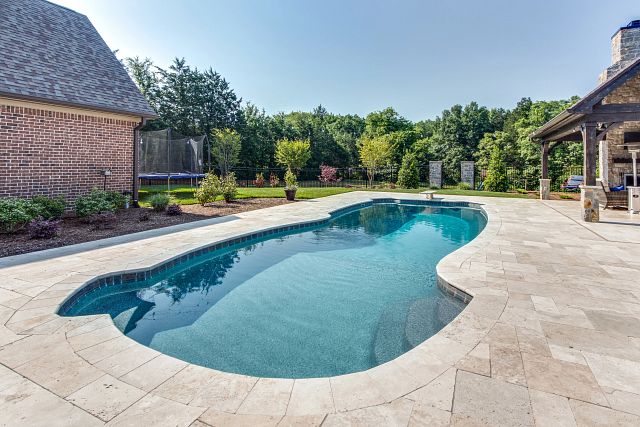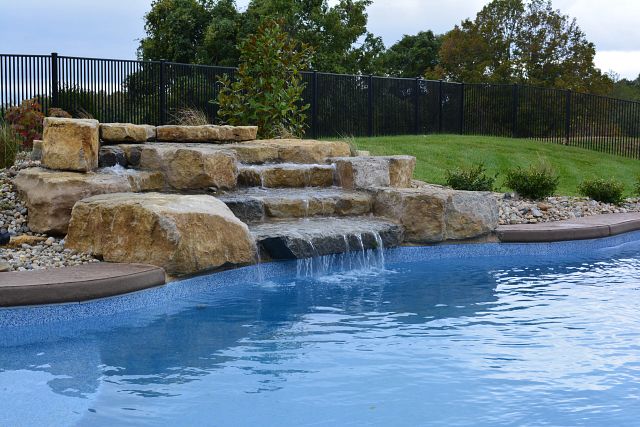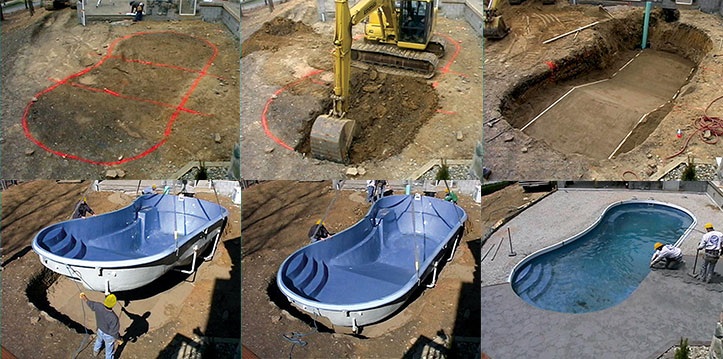If you’ve been considering installing an inground swimming pool in your backyard, you know that that decision is really just the tip of the iceberg. Today’s pool contractors offer a number of choices when it comes to size, shape, and materials used. One of the tougher decisions may be whether to go with a fiberglass vs a vinyl liner pool.
You can start by asking yourself how you’re going to use your pool, how much time you have to spend on preventative maintenance, and how much money you want to invest.
Fiberglass
Fiberglass pools have been around since the 1950s. If you have the money to spend upfront, they are a good option. Fiberglass pool shells are built in a factory from an existing mold. Once ordered, they are cast and delivered to your home. Because they can be built off-site and shipped, installation time is fairly quick. After they arrive at your home, the hole is dug, the shell is leveled, and you are pretty much ready to go.
Most fiberglass pools come with seats and steps molded into the shell. Also, the gel coat on the surface is largely non-porous, which means it resists the growth of algae, reducing the amount of time required to clean your pool. However, that same gel coat finish can sometimes require weekly cleaning and chemical treatment to protect it. Since fiberglass pool liners are built at the factory and shipped to your home over the road, you are also limited to a pool no wider than 16 feet.
Vinyl
If you’re starting with a lower initial investment, a vinyl pool liner may be the way to go. Vinyl liners are just that, a liner that is placed over a steel or polymer frame. That makes them easy to install and more customizable. Just like fiberglass, vinyl is a non-porous surface, which inhibits algae growth and is smooth to the touch.
With vinyl liner pool, you will eventually need to replace the vinyl liner. Liners generally last on average 10 years before needing to be replaced. They do typically come with a warranty, but those warranties pro-rate over time. That means that even if your liner needs replacing after just four years, you’re only going to get back part of the initial cost. There’s also regular maintenance involved, since vinyl liners are more sensitive to their environment.
You may also have to exercise some caution when using your vinyl pools. While vinyl liners are thick, vinyl is not as durable as fiberglass. If you don’t treat your liner with care and respect, you could be looking at a big repair for avoidable tears.
When choosing the right material for your in-ground pool, consider not only the price, but also how you choose to use your pool and how your design lends itself to the different materials. By making an informed decision, you can rest assured that your family will enjoy your new pool for years to come.
Start planning the right pool for you and your family with our Plan Your Pool section.







Join the discussion